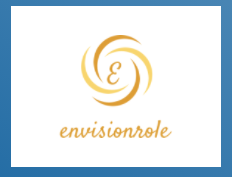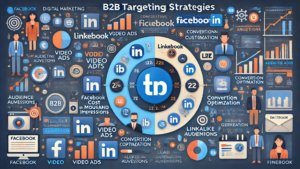B2B Targeting on Facebook: –
- Despite popular belief that the B2B goal on Facebook is effective.
- Here are the audience and strategies one needs to know to achieve results.
- With key differences between B2B on LinkedIn and Facebook:
- An effective B2B goal on Facebook begins with understanding the fundamental difference between Facebook and the popular B2B social platform LinkedIn.
- B2B’s success on Facebook requires thinking and strategies, especially if someone is in the habit of running LinkedIn campaigns.
The change is down to four key differences:
1. Cost: The price per thousand impressions (CPMs) on Facebook is usually cheap, allowing advertisers to test upper funnel strategies and provide more impressions for the same level of media investment.
2. Conversion optimization:
- Although both platforms have the ability to optimize campaigns to the right KPIs, Facebook excels at it.
- Combining a larger audience with a mid-funnel conversion such as white paper downloads will result in a tremendous increase in capacity compared to other platforms.
- Proficient in reading Facebook signals and locating converters in the audience.
3. B2B Demographics:
- Be prepared to be disappointed if someone tries to use target criteria such as job title, job function or company on Facebook.
- The sizes of those target sections are undoubtedly small and have an inaccurate risk.
- Professional demographic targeting means LinkedIn surpasses Facebook.
- On Facebook, be creative and use what makes the platform different for the purpose.
4. Placements:
Advertising on Facebook offers a variety of ad placements, each with its own benefits.
There are many ways to highlight a company and tell a brand story on Facebook, from continuous Facebook in-stream video ads to vertical-oriented article placements.
- Facebook Audiences:
- With this better understanding of the major differences between Facebook and LinkedIn, the next step is to develop a target audience to harness the power of Facebook.
- Many B2B advertising managers use LinkedIn for the tight targeting of the audience and the artisan nature.
Audiences appearing on Facebook:
- Facebook’s ability to create a corresponding look-alike audience (LAL) gives it a competitive advantage as well as a value-added look.
- Uploading a list of converted leads, including the Lifetime Value (LTV) of those leads, and creating a Customer Value custom audience will help determine the value of new potential converters based on existing data as well as maximize profitability.
- Customer Value Create a custom audience and create a look as a source based on that audience.
- Audiences that resemble the 1% form have a lot in common and are more likely to change each lead at a lower cost (CPL).
- 3% LAL loses slightly the target reliability of 1%, but its magnitude improves efficiency.
Third-party audience:
Third-party solutions are effective if they are looking for additional audience granularity or need to focus on specific audiences that are not accessible to a wider target audience.
Oracle Data Cloud:
- Through Oracle Data Cloud (ODC), selected advertisers can access a specific audience library from a variety of providers.
- This library can be pushed into the ad account as a shared positive audience and used in the same way as targeting a general positive audience.
- The price depends on the audience and is billed separately as a percentage of the media spending against the Oracle audience.
- Examples of target audience segments are company size, company value and past purchases.
Clearbit:
- Offering what they refer to as the “LinkedIn-Level Target on Facebook”, more than 100 B2B targeting standards are not available in Clearbit Advertising or are as reliable as Facebook’s local target.
- Target criteria include job role, seniority, industry, company technology usage and more.
- Combined with their audience graph, their targeting filters can easily push specific B2B segments into a positive audience for Facebook.
- ClearBit can create small, highly customizable campaigns for a wide variety of segments as well as a diverse B2B audience.
- If they are looking to try Facebook for B2B marketing efforts, here are some comprehensive strategic requirements that will help increase the potential for success:
- With its low CPMs and large audience sizes, Facebook is an effective channel for awareness and consideration phase marketing.
- Resist the temptation to go straight, especially with a cold prospecting audience, for a lower-funnel exchange such as a demo or trial offer.
- Warm up the audience with video or capture their information with gated content.
- If there is a large audience to experiment with, it is best to optimize Facebook campaigns and discover capabilities.
- Always pay attention to the size of the conversions on Facebook first.
- Explore ways to improve quality when receiving conversions on offers.
- Facebook Lead Generation Forms are generally running better conversion rates than driving traffic to a website, and these days they have another huge advantage – iOS 14.
- As pixel tracking on Apple devices slowly becomes a thing of the past, Facebook-centric conversions such as lead forms and messenger chats are relatively immune from any tracking and gaps, ensuring highly accurate performance data.
- They can be synced directly to CRM.
- A common complaint about Facebook-based B2B leads is that they are not of sufficient quality.
- This is especially true for B2B marketers looking for “up-market” leads in large, enterprise-level companies.
- One solution to this problem is to implement the Facebook Conversions API.
- Doing so allows users to synchronize backend data with the Facebook platform, as well as the ability to have tracking visibility in KPIs such as Marketed Qualified Lead (MQL), Closed Vone, and optimize campaigns for those KPIs.
- This is a powerful tool that allows skipping the pixel event altogether.
- Instead of expecting leads to turn into MQLs to optimize the campaign to fill out the form and fill out those forms, MQL data can be used to optimize campaigns for events to better inform and measure the goal at the front-end.
- API-based events are a game-changer for any advertiser looking to better tie their investment into business-driven KPIs.
- A successful B2B marketer on Facebook follows the strengths of the platform and understands how to use the tool effectively.
- To get the most out of Facebook for B2B marketing, follow these steps.
- Forget about targeting Facebook job titles and company profiles.
- Instead, select large B2B segments. These can be visible viewers, exclusively whitelisted Facebook audiences or third party data.
- Place the offers at the top or centre of the funnel for the audience to expect. Going properly for demos or trials may not provide the right quality or quantity of conversions. Better yet, try the Facebook Lead Gen form or Messenger Lead.
- Implement the Facebook Conversion API.
- Doing so enhances the long-term efficiency by providing the opportunity to improve quality through more precise optimization of business KPIs rather than pixel-based conversion proxies.
- A successful B2B goal on Facebook requires patience, understanding and having the right strategies and audience.
- By utilizing the low CPMs and most accurate conversion optimization technology offered by Facebook, B2B can deliver the best results for the business.

